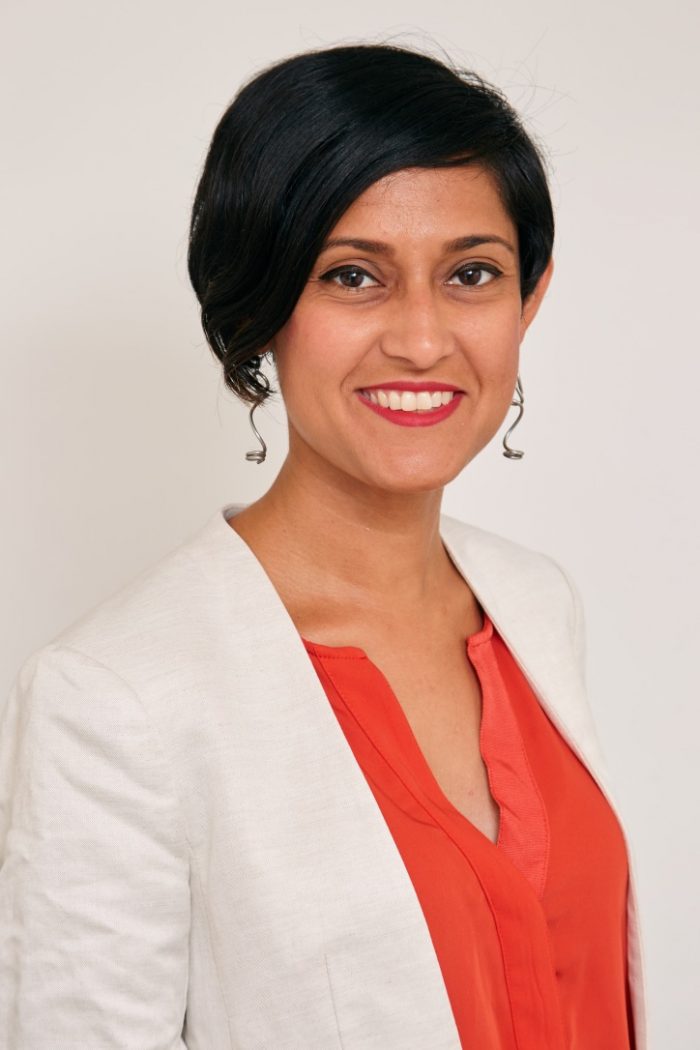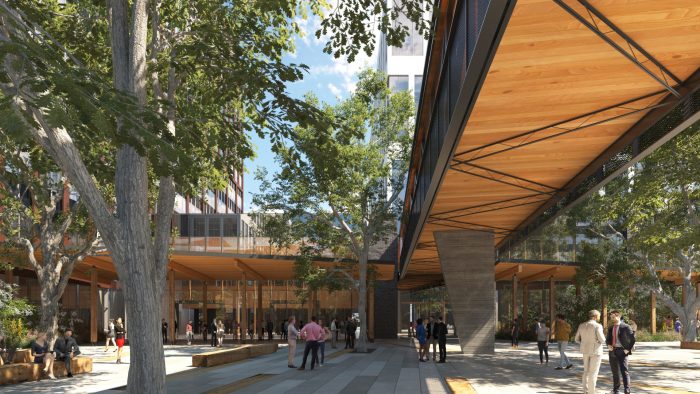Alumni Spotlight: Avideh Haghighi On Advancing Architecture Through Regenerative Design and Advocacy
 Avideh Haghighi (BArch ’11, San Diego) is a Licensed Architect specializing in sustainable design at ZGF, with experience on a variety of projects from schools to laboratories and commercial office buildings. She is personally and professionally invested in creating an environmentally sustainable and socially equitable future through an understanding of buildings as a part of a dynamic socio-ecological system. A big-picture thinker at heart, she thrives on guiding design teams to discover synergies between building, social and ecological processes. Avideh’s career has been equally rooted in design and advocacy. She has been serving as a facilitator and steering committee member of the Living Future Los Angeles Collaborative for the past four years, where she has led the development of a Strategic Vision plan. She has given numerous presentations at schools, universities and industry conferences on the topics of Living Buildings, Circular Economy and Healthy Materials. Avideh recently joined the steering committee of AIA California’s Committee on the Environment where she has been advocating for decarbonization in building codes.
Avideh Haghighi (BArch ’11, San Diego) is a Licensed Architect specializing in sustainable design at ZGF, with experience on a variety of projects from schools to laboratories and commercial office buildings. She is personally and professionally invested in creating an environmentally sustainable and socially equitable future through an understanding of buildings as a part of a dynamic socio-ecological system. A big-picture thinker at heart, she thrives on guiding design teams to discover synergies between building, social and ecological processes. Avideh’s career has been equally rooted in design and advocacy. She has been serving as a facilitator and steering committee member of the Living Future Los Angeles Collaborative for the past four years, where she has led the development of a Strategic Vision plan. She has given numerous presentations at schools, universities and industry conferences on the topics of Living Buildings, Circular Economy and Healthy Materials. Avideh recently joined the steering committee of AIA California’s Committee on the Environment where she has been advocating for decarbonization in building codes.
Interview with Avideh Haghighi
Q: Why did you choose to study architecture?
Architecture has always had a profound effect on me since childhood. Growing up, I was always aware of the energy and feeling of various spaces. This curiosity combined with my love for art and an analytical mind, led me to studying architecture. Throughout my K-12 education, architecture as a career path never occurred to me. I started out as an engineering major at UC Santa Barbara, and after taking all the intro classes to the various subjects (engineering, arts, sociology, psychology, etc), I concluded I was not interested in pursuing any of these fields as a career. I left UCSB after only a year due to an illness in the family and found myself back at a community college where I took my first drafting class. I was so excited by the prospect of using my creativity to shape the spaces around me – it was something tangible and profoundly empowering. After drafting class I spoke with my best friend’s uncle who had been a practicing architect for years and with his encouragement I decided to pursue a B.Arch.
Q: You have a diverse background working for architecture and engineering firms with a focus on sustainability and advocacy. How does sustainability shape your current work at ZGF?
The year I was at UCSB I had fallen in love with the new building on campus: Donald Bren School of Environmental Science. I remember admiring the red walls wrapping around the courtyard, dotted with thoughtfully placed planters and trellis. It was bold, it was red, and it turns out it was the first LEED Platinum building on campus! At that time architecture as a career path still hadn’t occurred to me (this is one of those instances when you look back and discover what you were looking for was right in front of you all along). Years later, after I started on my path as an architect, I discovered that this building was designed by ZGF.
My role at ZGF combines my passion for sustainability with design. I’ve been fortunate to have incredible mentorship and work on interesting projects during my time here. After struggling to find my place at a few different firms, ZGF has really been the place where I felt I arrived as an Architect. I’m currently a Project Architect and Sustainability Lead on the 1.25 million square foot Richards Boulevard Office Complex for the Department of General Services (aka the State). This is a Net Zero Carbon project targeting LEED Gold. I also worked on the largest Net Zero Energy project in California – the California Air Resources Board Headquarters. This is a new LEED Platinum state of the art vehicle emissions testing facility expected to wrap up construction soon. In addition to these two milestone projects, I regularly consult with various project teams on sustainability – whether it’s helping clients roadmap potential sustainability strategies, or guiding design teams in choosing healthy materials, or conducting LEED pre-design and pre-construction kickoffs.
Q: With changes to climate, technologies, and construction techniques, how do you think architects and designers will adapt ways of practicing to advance the profession?
I believe there are a lot of opportunities for architects to advance the profession given our current set of challenges. The problems we face as architects are global in nature, social at the core and systemic by default. In order for us to lead, there needs to be a collective awakening of the inefficiencies and unintended consequences of status quo building. This is something we are slowly and collectively realizing. Architects and designers by nature are good at complex problem solving, but I believe we’ve been approaching these challenges in a very tactical way: delivering singular solutions to singular problems. What we need to do is strategize: start looking at the interconnections between these compounding challenges and understand that every single building or structure we touch is a part of a larger system. We need to recognize that every single act of building has ripple effects far larger than we imagine. And once we start taking this into consideration, we will have taken the first step to truly transform the practice of architecture from an inefficient single-mindedness mentality to a regenerative mentality ready to tackle interconnected challenges with our unique set of skills.
Read more about Avideh’s work and advocacy in this article titled ‘The Building Industry’s Relentless Game of Tactics‘ and in the Living Future Collaborative, Los Angeles, Strategic Vision for which Avideh was co-facilitator.
Q: What advice would you give to students and designers who aspire to follow a similar career path?
First advice I would give is to follow your heart and let it lead you – you won’t ever go in the wrong direction. Second piece of advice would be to make sure wherever you are working you are supported, encouraged and mentored. These three things are so incredibly important in forming a strong foundation. It took years for me to feel “settled” into this profession and feel I belong. I have no doubt there are many others on the same path I have been, feeling not entirely secure. The last piece of advice is perseverance – keep going after what you want and do not stop until you get there. There are going to be many stepping stones along the way where you can get comfortable, but always keep your eyes on your goals and keep learning, keep growing, keep striving.
Q: What three words would you use to describe Woodbury?
Diverse, multi-dimensional, unique.
